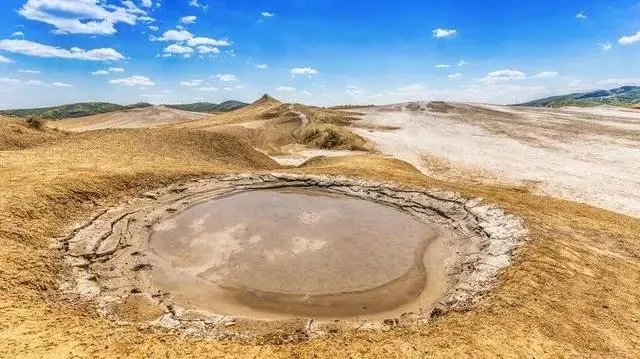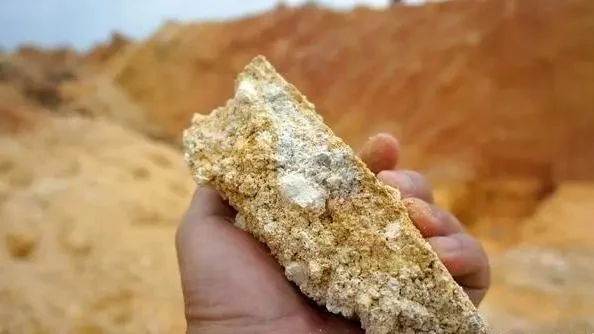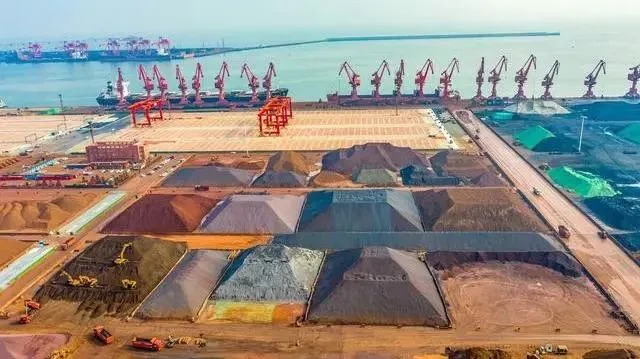 YuYi
YuYi
 Oct 14,2023
Oct 14,2023

Everyone may have heard of rare earths to a greater or lesser extent. Whenever Sino-U.S. relations become unstable, the exposure of rare earths will always increase significantly. There are also all kinds of articles introducing rare earths. In the end, we can always come to the conclusion that rare earths are China’s trump card, rare earths, have become a stuck industry in the United States. So what exactly are rare earths? How important are they? Is the U.S. rare earth industry really beaten by China? With these questions, we will reveal the answers one by one today.
Rare earth is not actually earth, but a more accurate term is rare earth element. It is the general name for a total of seventeen metal elements including lanthanide, scandium, and yttrium in the periodic table of elements. The origin of the name rare earth can be traced back to more than 200 years ago, and it is considered a name left over from history. Rare earths were discovered one after another since the end of the 18th century. At that time, people often called solid oxides that were insoluble in water earth. Rare earths were generally separated in the oxide state and were relatively rare at the time, so they were named rare earths. So this name is artificially determined. This name has continued since then, but later someone saw that rare earths have such a wide range of uses, so rare earth are also called "universal earths".

Rare earths mostly exist in nature in the form of rare earth minerals. In other words, these seventeen metal elements are all mixed in rare earth ores. Just like gold is extracted from gold mines and steel is extracted from iron ores. Rare earths also need to be extracted from rare earth ores. However, it needs to go through a complicated smelting and extraction process before it can be used by us. Common rare earth minerals include bastnasite, bastnasite, xenotime, lanthanum vanadium allanite, etc. Rare earths are actually not small in nature, but they are relatively scattered, and the most critical thing is the refining technology, which few countries can master.
The role of rare earths is huge. Among the rare earths is an element called promethium. It can radiate light, which means it only emits light without producing heat and looks like a firefly. Compared with ordinary self-luminous elements, the advantage of radioluminescence is that it requires no maintenance and can provide weak lighting for a long time. This is just one of its advantages. It has great military applications, such as the cockpits of airplanes and tanks, the many instrument panels on them, and some instrument equipment for night use, such as compasses, compasses, etc., which use radioactive luminescence. Made of powder coating, the instrument data displayed at night is very clear and clear at a glance. Greatly improved the troops' night combat capabilities.
Promethium has also been used in aerospace. 125 promethium-147 atomic lamps were used in the US Apollo lunar module. Phosphors made from promethium can be used in navigation lights. At the same time, promethium also has great medical uses. Batteries made of promethium isotopes have a long life, are durable and stable, can continue to work for 5 years, and can be used as a power source for pacemakers.
After talking about promethium, let’s look at the element neodymium. Neodymium is one of the most popular elements among rare earths. And it has a very special status in many fields. Neodymium element can not only be made into special optical glass, such as goggles, etc. but also has an important use in making permanent magnet materials. Compared with neodymium magnets, after magnetization, The magnetism displayed is not only very strong, but also can be maintained for a long time, endures for a long time, and can be maintained almost forever. It is an excellent permanent magnet material. It has a wide range of uses. The hard drives in our computers and some components in our mobile phones are inseparable from permanent magnet materials made of neodymium.

Taking a hard disk as an example, a hard disk is generally composed of a magnetic head assembly, a magnetic head drive mechanism, a disk plate, and a spindle assembly. The rotation speed of a hard disk can reach 7,200 rpm when running, and the rotation speed of a military disk can even reach about 20,000 rpm. The magnetic heads and disks inside are made of permanent magnet materials made of neodymium. To ensure stability and reliability. The vibration motors, speakers, and headphones in mobile phones all use rare earth neodymium permanent magnet materials.
There are also many rare earth elements, all of which have many uses. In particular, the electronics and aerospace industries are very dependent on rare earth elements. The production of chips and missile guidance systems, ranging from space shuttles to smartphones, are inseparable from rare earth elements. The importance of these rare earth elements is self-evident. With the improvement of refining technology, the uses of rare earths are becoming more and more extensive, and rare earths have become important resources, even strategic resources.
In fact, the United States dominated the world in the mining and refining of rare earths in the 1950s. Two American companies play an important role here. In 1949, three American geologists accidentally discovered a highly radioactive ore sample in Mountain Pass. The almost magical element in it continuously spawned new industries because of its characteristics that can change the properties of metal materials and eventually became An indispensable core element in today's cutting-edge high-tech applications. In the history of the rare earth industry that lasted for more than half a century, rare earth companies such as Molycorp and Magnequench in the United States dominated the entire process from mining, and beneficiation to purification and refining. The industrial chain, from the europium in phosphors for color TVs to the permanent magnets in U.S. cruise missiles and the stealth coating of the F-117 stealth bomber, all came from these two companies. The picture below shows the mining situation of rare earths, it can be seen that the mining in the United States was the only one in the world at that time.
However, with the relocation of American industry and the rise of Chinese industry, the United States has transferred all heavy-polluting industries. Now of these two companies, one has collapsed due to the impact of China, and the other has been acquired by China. Perhaps the United States did not expect that the future development of rare earths would be like this.
Under such circumstances, the United States has lost its processing and refining capabilities. The United States now only has mining capabilities. To put it bluntly, it can select rare earth minerals very well, but it cannot process them. This is like the United States selecting a sheep with good wool to extract wool, but it can turn the wool into sheep. Only China sells sweaters and blankets. The United States is currently only trying to plunder wool. In fact, the rare earth mineral resources in the United States are enough for the United States to use for 100 years. However, the United States no longer has the processing capacity. Rare earth production requires two steps, first mining and then processing. Processing has always been the gap. China dominates rare earth production through processing. The reason why China can dominate the international rare earth supply chain is that currently almost only China has the ability to purify and refine rare earths and convert them into precious minerals, magnetic powder, and other high-value products.

In the mid-1990s, China's rare earth mining volume was only about twice that of the United States. However, just five years later, by 2000, China's mining volume was 14 times that of the United States. At this time, almost all of the world's rare earth production comes from China, so China also determines the pricing of rare earths. China has seen that the role of rare earths is becoming more and more important, and more and more countries in the world need rare earths. In this way, China will of course be the one to share the cake. I have the final say on how to sell it, at what price, and which country will give you the share. As a result, China has become the absolute overlord of the rare earth market. The United States really has to look at China's attitude in this regard. Otherwise, if these things are lacking, the industrial chains that are the pillars of the country will inevitably be affected. This has also become a big problem for the United States. The rare earth industry in the United States is really beaten by us.
Then the United States has never thought about revitalizing its rare earth industry. In fact, it has thought about it. However, in the United States, from the establishment of a project to the final implementation, it not only needs to persuade the government to allocate funds but also needs to open various large and small projects. Meeting discussions, and even if the U.S. government passes it, the state government may conduct an evaluation, and various private environmental organizations will raise various questions and even oppose protests. After all, these rare earth elements are heavy metals, and the pollution caused by mining and processing is self-evident. Based on this calculation, even if it is successfully passed, it will probably take quite a long time. In addition, the refining technology needs to be developed, and it will probably take several years until it can finally be produced. Even if it is passed, it will still be highly supervised by the Environmental Protection Department.
Therefore, rare earths are something that the United States will need to worry about for a long time to come. If things get really desperate, China has no tricks of its own. Rare earths are China’s trump card and this is where China’s confidence lies.
